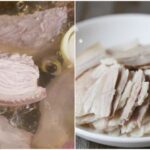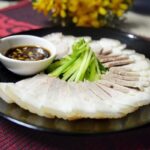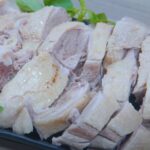How to Choose Fresh and Delicious Pork
To make a delicious boiled pork dish, you first need to select fresh, tasty, and clean pork. The best cut of pork for boiling is the pork belly or pork shank. These cuts have a good balance of lean meat and fat, resulting in tender and flavorful meat.
Additionally, look for meat with a bright pink color, a firm texture with high elasticity when pressed, even muscle grain, and a dry cut surface. On the other hand, if the meat looks pale, feels soft, and has an unpleasant odor, it means the pork has spoiled due to improper storage.
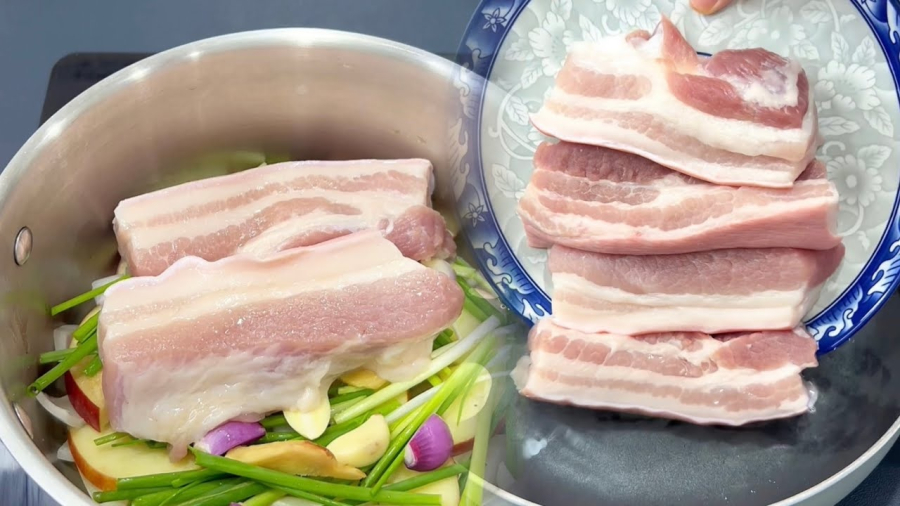
Choosing fresh pork is the first step to boiling tender, evenly cooked, and clean pork
How to Get Rid of the Pork’s Unpleasant Odor
Usually, pork from healthy pigs that have been raised in a clean environment will smell and taste great. However, due to the widespread use of growth promoters in pig farming, pork often has an unpleasant odor.
If you happen to buy pork with an unpleasant smell, you should first clean it and pay attention to the following methods to eliminate the odor:
– Before boiling, remove any dirt or chemical residue, as well as the unpleasant odor, by rinsing the pork several times with clean water. You can also use a diluted salt solution to wash the meat, as this helps remove impurities.
– The secret to delicious boiled pork without the unpleasant odor is to boil it twice. The first boil is a quick dip, and the second boil is to cook it thoroughly.
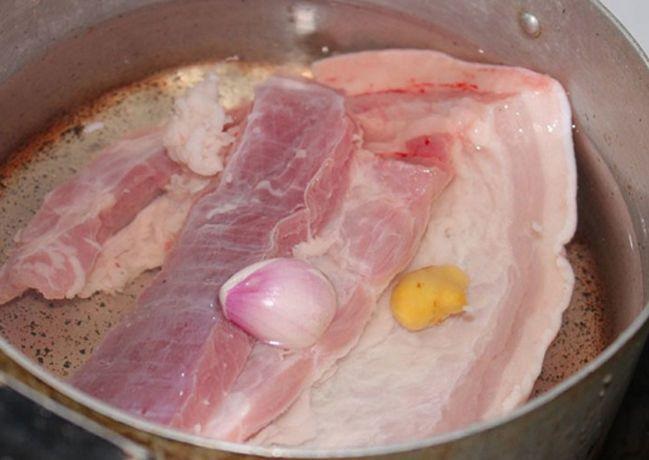
Rinse the pork with ginger and shallots
How to Properly Boil Pork
– For the first boil, add a teaspoon of vinegar, a few thin slices of ginger, and half a teaspoon of salt to the boiling water. Then, place the pork in the pot for about 2 minutes before removing it and rinsing it again. This process will eliminate any unpleasant odor, and the addition of vinegar and salt will help keep the meat white and clean.
– For the second boil, place the pork in the pot from the beginning, adding enough water to cover it. Crush a few shallots and put them in the pot, along with some spices, to enhance the flavor of the meat. Boil the pork until it comes to a rolling boil. To check if the pork is cooked, use a pair of chopsticks to pierce the meat.
The boiling time cannot be determined precisely as it depends on the size and thickness of the meat. If the pork is thick and large, it may take a long time to cook thoroughly. In this case, it is recommended to cut or slash the meat to ensure even cooking without making it tough.
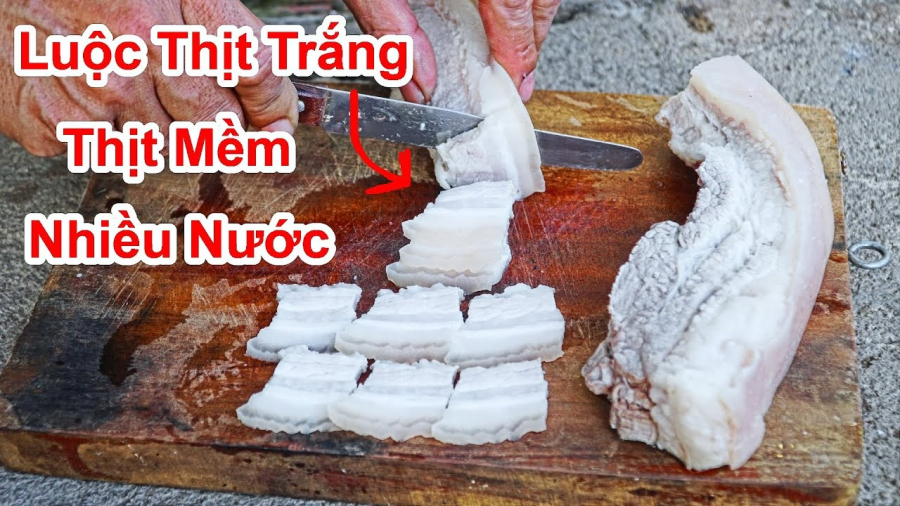
The final product is tender pork with clear juice, evenly cooked, and free from impurities
When boiling pork, it is important to skim off any foam that forms to keep the meat clean. Once the fat turns slightly translucent, and no red liquid comes out when pierced with chopsticks, the pork is cooked. At this point, turn off the heat and remove the meat from the pot to drain.
To prevent the boiled pork from turning red, turn off the heat after boiling for 10-15 minutes and let the pot stand covered for another 10-15 minutes, depending on the size and weight of the meat. This allows the heat to penetrate and cook the meat evenly, resulting in tender and sweet pork. After boiling, place the pork in a bowl of boiling water to cool, adding ice cubes and a few slices of lemon to make the skin whiter and crispier.
– Once the pork has cooled down, use a knife to cut it into thin, bite-sized pieces. It is important to cut the meat across the grain to prevent toughness. Now, simply arrange the pork on a plate and prepare a delicious dipping sauce to enjoy this tender and aromatic dish.
The Ultimate Guide to Flavorful Boiled Meat: A Secret Ingredient to Success
The Art of Spicing Up Your Boiled Meat: A Guide to Enhancing Flavor and Aroma.
A well-seasoned dish is a delight to the senses, and when it comes to boiled meat, the right spices can transform a mundane meal into an extraordinary culinary experience. In this guide, we’ll reveal the essential spices that will not only eliminate any unpleasant odors but also enhance the flavor and aroma of your boiled meat, taking your culinary creations to the next level. It’s time to spice things up!

























